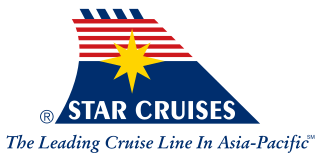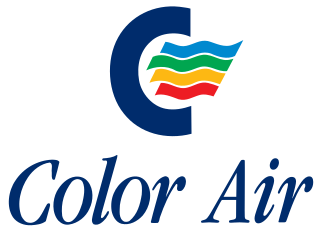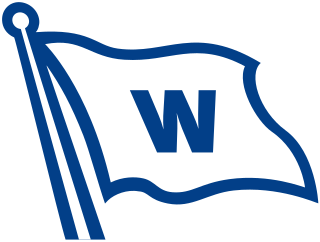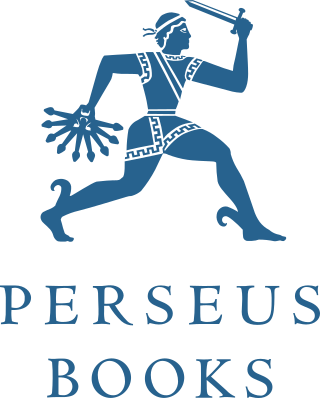Virgin Books is a British book publisher 90% owned by the publishing group Random House, and 10% owned by Virgin Group, the company originally set up by Richard Branson as a record company.

Carnival Corporation & plc is a British-American cruise operator with a combined fleet of over 100 vessels across 10 cruise line brands. A dual-listed company, Carnival is composed of two companies – Panama-incorporated, US-headquartered Carnival Corporation, and UK-based Carnival plc – which function as one entity. Carnival Corporation is listed on the New York Stock Exchange, whereas Carnival plc is listed on the London Stock Exchange with an ADR listing on the NYSE. Carnival is listed in both the S&P 500 and FTSE 250 indices.

The Blue Star Line was a British passenger and cargo shipping company formed in 1911, being in operation until 1998.

United States Lines was the trade name of an organization of the United States Shipping Board (USSB), Emergency Fleet Corporation (EFC) created to operate German liners seized by the United States in 1917. The ships were owned by the USSB and all finances of the line were controlled by the EFC. Among the notable ships of this period was Leviathan, a contender for largest ship in the world for a time.

Norwegian Cruise Line (NCL), also known in short as Norwegian, is an American cruise line founded in 1966, incorporated in Bermuda and headquartered in Miami. It is the fourth-largest cruise line in the world by passengers, controlling about 8.6% of the total worldwide share of the cruise market by passengers as of 2021. It is wholly owned by parent company Norwegian Cruise Line Holdings.

Star Cruises was a cruise line headquartered in Hong Kong and operating in the Asia-Pacific market. The company was owned by Genting Hong Kong. It was the eighteenth largest cruise line in the world after Carnival Corporation, Royal Caribbean Cruises and 15 others.
AGCO Corporation is an American agricultural machinery manufacturer founded in 1990 and with its headquarters in Duluth, Georgia, United States. AGCO designs, produces and sells tractors, combines, foragers, hay tools, self-propelled sprayers, smart farming technologies, seeding and tillage equipment.

Color Line AS is the largest cruiseferry line operating on routes to and from Norway. The company is also one of the leading operators in Europe. Color Line provides transportation for people and cargo, hotel accommodation, shopping, restaurants and entertainment. The company currently employs 3500 people in four countries.
The Oslo tram network is the tram system in Oslo, Norway. It consists of six lines with 99 stops and has a daily ridership of 132,000. It is operated by Sporveien Trikken AS, a subsidiary of the municipally-owned Sporveien who maintain the track and 72 tram vehicles on contracts with the public transport authority Ruter. The system operates on standard gauge and uses 750 V DC overhead. Depot, workshops and headquarters are at Grefsen. There is also a depot at Holtet that is home to the technical company InfraPartner, which maintains the track for the tram and metro systems in Oslo, and a small office building for Oslo Sporveier.

Fincantieri S.p.A. is an Italian shipbuilding company based in Trieste, Italy. Already the largest shipbuilder in Europe, after the acquisition of Vard in 2013, Fincantieri group doubled in size to become the fourth largest in the world (2014). The company builds both commercial and military vessels.

Nydalen is a rapid transit station on the Ring Line of the Oslo Metro. It is located at Nydalen in the Nordre Aker borough of Oslo, Norway. The station opened on 20 August 2003, as part of the first section of the Ring Line to Storo. The station is served by lines 4 and 5 of the metro, as well as several local bus services. Artistic effort was put into the construction of the station, and the escalators were built into the Tunnel of Light exhibition. Close by the station is the BI Norwegian Business School (BI) campus and several large working places.
Minoan Lines is one of the largest passenger ferry companies in Europe, and one of the dominant passenger ferry companies in Greece, sailing between Piraeus and Crete and in the Adriatic Sea, between Patras and various Italian ports. The company was founded in May 1972. Since 2008 Grimaldi's Compagnia di Navigazione SpA owns and controls 95.9 of the stock of Minoan Lines.

Color Air AS was the first Norwegian low-cost airline. It operated from Oslo Airport, Gardermoen in 1998 and 1999 with a fleet of three Boeing 737-300 aircraft. Color Air was a brand extension of Color Line, which shared a common owner in the Olav Nils Sunde-controlled Color Group. The airline operated five daily round trips from Oslo to Trondheim and Bergen, four to Ålesund and one to London, in addition to a weekly trip to Alicante. Color Air pioneered the low-cost business model in Norway, with a denser seating, no frills and lack of a frequent flyer program. Tickets were sold only via the Internet, by telephone or in supermarkets; when bought from travel agents, there was a 200 kr surcharge.
STX Europe AS, formerly Aker Yards ASA, was until 2012 a subsidiary of the South Korean STX Offshore & Shipbuilding.

Wilh. Wilhelmsen Holding ASA (WWH) is a Norwegian multinational maritime group, headquartered in Lysaker, Norway. The group employs more than 21,000 people and has operations in 75 nations. The Wilhelmsen group operates the largest maritime network in the world, with over 2200 locations worldwide.

Funko Inc. is an American company that manufactures licensed and limited pop culture collectibles, best known for its licensed vinyl figurines and bobbleheads. In addition, the company produces licensed plush, action figures, apparel, accessories and games.

SL79 is a class of 40 articulated trams operated by the Oslo Tramway of Norway. The trams were a variation of the Duewag trams that had been developed by the German manufacturer since the 1950s. The six-axle vehicles are unidirectional with four doors on the right side. The trams can seat 77 passengers three and four abreast, with an additional 91 people able to stand. Power output is 434 kilowatts (582 hp), provided by two motors on the two end bogies, that supplement a central unpowered Jacobs bogie located under the articulation. The trams are 23.0 metres (75.5 ft) long and 2.5 metres wide. They are capable of 80 kilometres per hour (50 mph) and have standard gauge.

Perseus Books Group was an American publishing company founded in 1996 by investor Frank Pearl. Perseus acquired the trade publishing division of Addison-Wesley in 1997. It was named Publisher of the Year in 2007 by Publishers Weekly magazine for its role in taking on publishers formerly distributed by Publishers Group West and acquiring Avalon Publishing Group. After the death of Frank Pearl, Perseus was sold to Centre Lane Partners in 2015, a private equity firm. In April 2016, its name and publishing business was acquired by Hachette Book Group and its distribution business by Ingram Content Group.

The history of the Oslo Tramway and Oslo Metro in Oslo, Norway, starts in 1875, when Kristiania Sporveisselskab (KSS) opened two horsecar lines through the city centre. In 1894, Kristiania Elektriske Sporvei (KES) built the first electric street tramways, which ran west from the city centre. Within six years, all tramways were electric. The city council established Kristiania Kommunale Sporveie (KKS) in 1899, which built three lines before it was sold to KSS six years later. Both KSS and KES were taken over by the municipality in 1924, becoming Oslo Sporveier. The company gradually expanded the city tram network, which reached its peak length in 1939.














